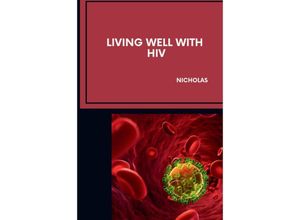An estimated.two-thirds of the 36.7 million people infected with.the Human
immunodeficiency.virus (HIV) resideon the African.continent 1. Once infection.has occurred
HIV destroys.the hosts CD4+ immune.cells leading toacquired.immunodeficiency syndrome (AIDS)
2. .HIV AIDS is wide.spread throughout.Sub-Saharan Africa andexacerbates various.socioeconomic
issues 3. South Africa has.some of the highest prevalence.of HIV AIDS.in theworld with
an.estimated 7 million people.living with HIV 4. .An estimated 115 000.HIV-related deaths
occurred inSouth Africa in 2018 .emphasizing the.need for HIV research.in
Sub-Saharan.countries 4.The HIV-1 virus.consists of two copies.of non-covalently.linked
positive.sense single-stranded.RNA molecules 5.This is enclosed.by a p24 viral.protein.conical
capsid situated.within a.viral envelope. .The viral envelope isderived from the.host cell
membrane and.contains viral.glycoproteins such.as gp120.and gp41 which.areimbedded.in the
viral.envelope 2 6 7. .Once HIV-1 exposure.occurs .the virus migrates.to CD4+ immune.cells.
Thisoccurs.due to the.affinity of the HIV-1 viral.envelope.gp120 gp41 complex.for CD4
antigen.receptors on thesurface of host.CD4+ immune cells 2 6. Once.the gp120 subunit.of the
viral envelope.interacts with a CD.antigenreceptor co-receptor binding.takes place 2 7. The
co-receptor.binding results in conformation.changes in the HIV-1 envelope .leading to the
exposure.of the gp41 hydrophobic.domain allowing.fusion of the.envelope
with.thecellular.membrane and the.subsequent delivery.of the viral core.into the cytoplasm 2.
The.uncoating of the.viralcore exposes.Reverse transcriptase a HIV.enzyme to
deoxynucleotide.triphosphates (dNTP's) resulting inreverse transcription.and proviral DNA
synthesis 2. After reverse.transcription is completed .the formation.of acomplex consisting
of.viral and cellular components is.formed known as the viral pre-integration.complex. This
istransported to the.cell's nucleus where the.HIV-1 enzyme Integrase catalyses.the
integration of the viral.genomewith the human.DNA 2 7. This maintains the.viral DNA.in the
infected host cell and allows.transcription thus thecell can express viral.mRNA and viral RNA.
Once.transcription is initiated the necessary viral.constituents moveto the inside of the
plasma.membrane and assemble to form an.immature HIV-1 virus 2. The newly.formedimmature virus
buds.off from the cell and releases.protease to break down large.HIV-1 protein chains.
.Thesebroken down HIV protein.chains combine to form.a mature HIV-1 virus 2.The viral
life.cycle discussed above (shown in Figure 1.1) can be.subdivided into seven.distinct stages
namelybinding fusion reverse.transcription integration replication .virus assembly
production and.budding. The HIV-1lifecyclexpresents various.potential opportunities
for.therapeutic intervention.and six distinctclasses ofantiretrovirals (ARVs) havexbeen
developed 2.

